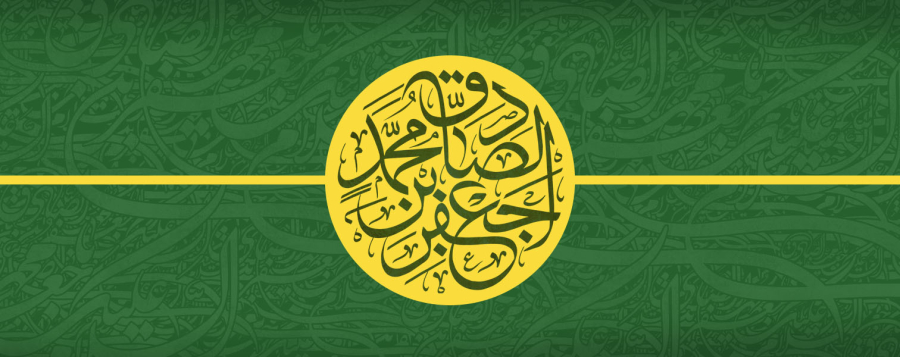Imam Sadiq University
Imam Sadiq UniversityHomeHome top tabs
Imam Sadiq(A.S)Who Is Imam Sadiq(A.S)
| Post date: 2019/08/31 |
The holy Imam Ja'far As-Sadiq was the sixth Imam in the succession of the twelve Apostolic Imams. His epithet was Abu 'Abdillah and his famous titles were As-Sadiq, Al-Fadil and At-Tahir. He was the son of Imam Muhammad Al-Baqir, the Fifth Imam, and his mother was the daughter of Al-Qasim ibn Muhammad ibn Abi Bakr.
Imam Ja'far As-Sadiq saw his grand-father, Imam Zaynu 'I-'Abidm in Medina for twelve years and then remained under the sacred patronage of his father Imam Muhammad al-Baqir for a period of nineteen years.
Imam’s Knowledge and his Sciences
Imam Jaffer Sadiq(a.s.) stood out among their group for his great merit (fadl); he was the most celebrated, the greatest in rank and the most illustrious of them in the eyes of both the non-Shia (al-amma) and the Shi’a (al-khassa). The people transmitted on his authority the religious sciences which travelers carried with them and thus his fame was spread throughout the lands. The learned scholars have transmitted on the authority of no other member of the House (ahl al-bayt) as much as they have transmitted on his authority. None of them met as many of the reporters of traditions as he did, nor did the latter transmit on their authority to the same extent as they transmitted on the authority of Abu Abd Allah Imam Jaffer Sadiq(a.s.). The specialists in tradition (ashab al- hadith) have gathered together the names of those who narrated on his authority, who were reliable despite differences in views and doctrines and they were four thousand men. The clear evidence for his Imamate was such that it overcame hearts and silenced the attempts of an opponent to denigrate it with doubts.
During the imamate of the sixth Imam greater possibilities and a more favorable climate existed for him to propagate religious teachings. This came about as a result of revolts in Islamic Lands, especially the uprising of the Muswaddah to overthrow the Umayyad caliphate, and the bloody wars which finally led to the fall and extinction of the Umayyads. The greater opportunities for Shi’ite teachings were also a result of the favorable ground the fifth Imam had prepared during the twenty years of his imamate through the propagation of the true teachings of Islam and the sciences of the Household of the Prophet.
The Imam took advantage of the occasion to propagate the religious sciences until the very end of his imamate, which was contemporary with the end of the Umayyad and beginning of the Abbasid caliphates. He instructed many scholars in different fields of the intellectual and transmitted sciences, such as Zorarah, Muhammad ibn Muslim, Mu’min Taq, Hisham ibn Hakam, Aban ibn Taghlib, Hisham ibn Salim, Hurayz, Hisham Kalbi Nassabah, and Jabir ibn Hayyan, the alchemist. Even some important Sunni scholars such as Sufyan Thawri, Abu Hanifah, the founder of the Hanafi school of law, Qadhi Sukuni, Qadhi Abu’l- Bakhtari, and others, had the honor of being his students. It is said that his classes and sessions of instruction produced four thousand scholars of hadith and other sciences. The number of traditions preserved from the fifth and sixth Imams is more than all the hadith, that have been recorded from the Prophet and the other ten Imams combined.
There are innumerable reports about him concerning signs and revealing the unknown similar to those which we have mentioned, which would take too long to recount.
He used to say: “Our knowledge is of what will be (ghabir), of what is past (mazbur), of what is marked in hearts (nakt fi al-qulub), and of what is tapped into ears (naqr fi al-asma). We have the red case (jafr), the white case, and the scroll of Fatima(s.a.) and we have (the document called) al-jami’a in which is everything the people need.”
He was asked to explain these words and he said: “Ghabir is knowledge of what will be; mazbur is knowledge of what was; what is marked in the hearts (nakt fi al-qulub) is inspiration; and what is tapped into the ears (naqr fi al- asma) are words of angels; we hear their speech but we do not see their forms. The red case (jafr) is a vessel in which are the weapons of the Apostle of God, may God bless him and his family. It will never leave us until the one (destined) among us members of the House, to arise (qa’im), arises. The white case (jafr) is a vessel in which are the Torah of Moses, the Gospels of Jesus, the Psalms of David and the (other) Books of God. The scroll of Fatima, peace be on her, has in it every event which will take place and the names of all the rulers until the (last) hour comes. (The document called) al-jami’a is a scroll seventy yards long which the Apostle of God, may God bless him and his family, dictated from his own mouth and Ali b. Abi Talib, peace be on him, wrote in his own handwriting. By God, in it is everything which people need until the end of time, including even the blood-wit for wounding, and whether a (full) flogging or half a flogging (is due).
He, peace be on him, used to say: “My traditions are my father’s traditions; my father’s traditions are my grandfather’s traditions; my grandfather’s traditions are the traditions of Ali b. Abi Talib, the Commander of the faithful; the traditions of Ali the Commander of the faithful are the traditions of the Apostle of God, may God bless him and his family; and the traditions of the Apostle of God, may God bless him and his family, are the word of God, the Mighty and High.
Source: Imam Sadiq University


















